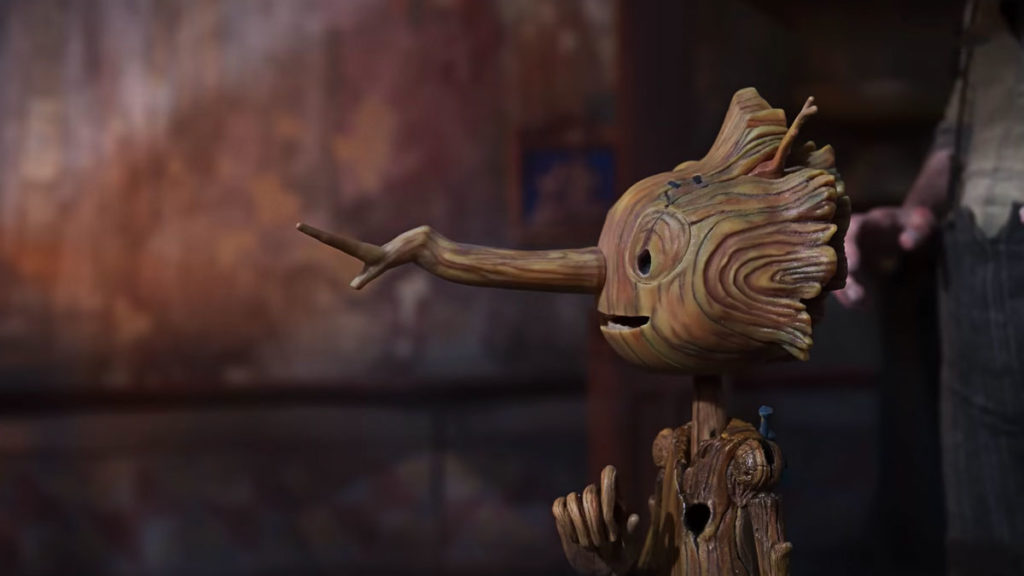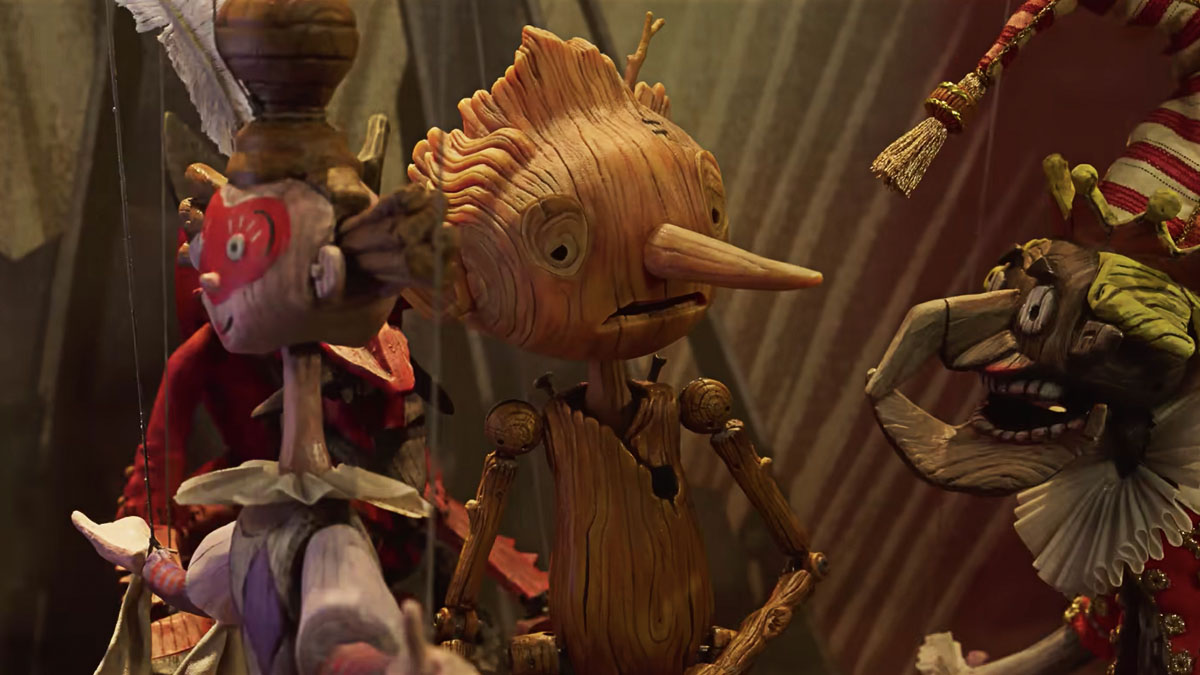Despite the fact that he is a genius auteur with not one, but two Academy Awards, it was with great trepidation that I approached Guillermo del Toro’s version of Pinocchio, aptly called, erm, “Guillermo del Toro’s Pinocchio.” And who could blame me? After all, the recent Disney+ iteration of the story was, without exaggeration, a horrendous abomination unfit for man or beast. But I needn’t have worried: From the very first frame, it was clear that this beloved tale was in good hands.
First of all, “Guillermo del Toro’s Pinocchio” is just plain gorgeous. Absolutely everything in every single frame of this stop-motion film is a breathtaking, vibrant work of art: every tree, every brick, every cobblestone, every drop of rain, and— most especially— every character. Obviously designed with more whimsy than anatomical accuracy in mind, every single character in the story is deeply expressive and bursting with inner life; even (amazingly) the ones whose faces are literal masks that never move at all.
The voice actors, too, are completely top-notch. The cast list reads like a “Who’s Who” of Hollywood luminaries: Ewan MacGregor, Christophe Waltz, Ron Perlman, and Tilda Swinton, to name but a few. (In a hilarious bit of stunt casting, Cate Blanchett, The Greatest Actress of Her Generation™️, appears as Spazzatura, a carnival monkey whose dialogue consists solely of shrill “ooh-ah-ooh-ah” sounds and the occasional whimper.)

The story is another element in the film’s favor. It (very wisely) begins with an extended flashback that serves two purposes: 1) to establish the deep love between woodworker Geppetto and his inevitably doomed son Carlo; 2) to diminish the— let’s face it— potential ickiness of having this old man want a little boy so badly that he actually ends up carving one out of wood. From there, the story begins to deviate even more from the usual, going in unexpected directions, many of which, I must say, actually improve on the story we know and love. To say more would be spoiling the film’s many pleasures; suffice it to say that Mr. del Toro has managed to make World War Two a major part of the narrative. (One of the characters is Benito Goddamn Mussolini, for heaven’s sake!)
The mood of the piece, too, sets it apart from other versions. The original 19th century stories by Italian author Carlo Collodi (whose first name was no doubt borrowed for the main character) may have been many things— whimsical, charming, educative— but they were never terrifying. Although he has created an ostensible children’s movie, del Toro clearly could not resist inflecting it with horror. And why not? It’s the genre that he knows and loves; the same one that made him famous.
Because make no mistake: “Guillermo del Toro’s Pinocchio” can be pretty damn scary. While some of what’s on screen can charitably be called “mildly grotesque” (like Pinocchio’s spider-like first steps), some of it is pure, gleeful nightmare fuel (like some of the puppets that share the stage with him at the fateful carnival). But you know what? This story has always been scary and disturbing. Why not lean into it? (By the way, the film is also, on occasion, laugh-out-loud funny.)
Still, the movie is not perfect. For one thing, the songs are… not great. I’m not talking about Alexander Desplat’s score, which is effectively evocative; I’m talking about the song numbers. Yes, this is a musical— SURPRISE! Sadly, though, it’s not a very good one: While they each serve their dual purpose of reinforcing character and advancing plot, the songs— and there are quite a few of them— are completely flat and forgettable, the kind that few people would be rushing to add to their Spotify playlists. Sad to say, they’re not sung with particular aplomb, either. Removing these musical numbers completely would have not only vastly improved the entire proceedings, but also considerably shortened the nearly two-hour runtime. No children’s movie should be this long! (Yes, I’m complaining about runtime again. But that’s only because no one in Hollywood seems to be listening.)
All in all, “Guillermo del Toro’s Pinocchio,” despite the deviations from the norm— or more accurately because of them— is a worthy addition to the growing list of content about the world’s most famous wooden boy. Simply put, this ain’t your grandfather’s “Pinocchio”… and the film is all the better for it. (Just don’t make the mistake of watching the one on Disney+.)
RATING:

5 crowns: a must-see
4 crowns: excellent
3 crowns: good but not great
2 crowns: just about watchable
1 crown: avoid at all costs
Click here for more stories like this. You may also follow and subscribe to our social media accounts: Facebook, YouTube, Instagram, TikTok, Twitter, and Kumu.






















